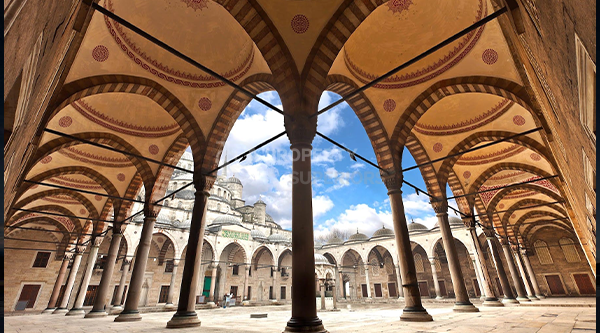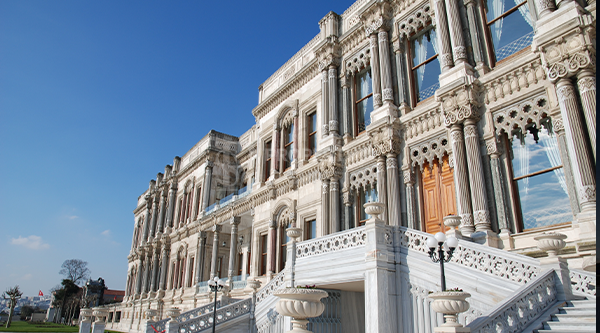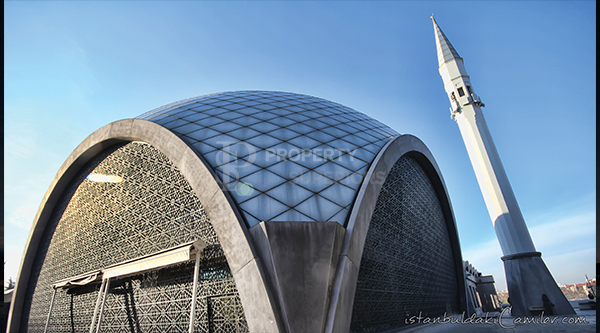
The country's rich history and numerous cultural influences are reflected in Turkey's architectural legacy, which is a fascinating journey. Turkey's architectural styles have changed and adapted throughout the years, from the magnificent monuments of the Ottoman Empire to the contemporary marvels. This extensive essay will examine the major architectural movements that have influenced Turkey's environment, emphasizing their individual characteristics, historical import, and influence on contemporary design. Join us as we travel across time via architecture.
Seljuk influence on early Turkish architecture (11th–13th centuries)
Turkish architecture has its origins in the Seljuk era, which lasted from the 11th through the 13th century. The Seljuk Turks gave Anatolia a distinctive fusion of Islamic, Persian, and Central Asian architectural influences. The Great Mosque of Konya, which displays the distinctive Seljuk architecture with its exquisite domes and elaborate geometric patterns, is one of the most well-known buildings from this time period.

Magnificent Ottoman Architecture (14th - 20th Century)
The Ottoman Empire, which lasted for several centuries, had a profound impact on Turkish architecture. Ottoman buildings are notable for their magnificence, creativity, and synthesis of numerous architectural forms. The renowned Hagia Sophia, which was a church, then a mosque, and is now a museum, is an example of the height of Ottoman architecture.
The "mosque complex," a peculiar architectural design created by Ottoman architects, including a mosque, a madrasah (school), an imaret (soup kitchen), and other amenities. The Suleymaniye Mosque in Istanbul, which was built by the renowned architect Sinan, is a masterpiece of this idea.
Neo-Classical and Neo-Ottoman Styles and the Rise of Turkish Revival (19th–20th Century)
Turkey had a phase of revivalism in the 19th and 20th centuries, embracing Western architectural ideas while taking inspiration from its Ottoman heritage. During this time, the Neo-Classical and Neo-Ottoman styles gained popularity. Neo-Classical influences may be seen in structures like the Istanbul Archaeological Museums and the Faculty of Science at Istanbul University, while Neo-Ottoman influences can be seen in the Dolmabahçe Palace.
Modernism and Beyond (20th Century - Present)
Modernism gained prominence as Turkey entered the 20th century, impacting both urban planning and architecture. Modernist architectural concepts are demonstrated by the Atatürk Cultural Center in Istanbul and the Republic Monument in Ankara.
Turkey's architecture has recently adopted modern and futuristic styles. Istanbul's mixed-use Zorlu Center, which has striking geometric designs and cutting-edge technology, is a prime example of the modern architectural skill of the nation.
Regional Influences: Turkey's many architectural styles
Regional architectural differences have also developed in Turkey as a result of its wide and diverse topography. A distinctive fusion of architecture and environment may be seen in the ancient stone buildings of Cappadocia that are carved into the fairy chimneys. Intriguing instances of local architectural appeal are the perched homes along the Black Sea and the timber homes of Safranbolu.

Attempts at preservation and restoration
Turkey's architectural history must be preserved at any costs. The preservation and repair of historical sites has been a top priority for agencies like UNESCO and the Turkish Ministry of Culture and Tourism. In order to preserve these architectural marvels for future generations, continuing efforts are being made to protect well-known sites like Topkapi Palace and the ancient city of Ephesus.
Turkish Modern Architecture: A New Wave of Creativity
Turkish architects with potential are increasingly making their impact on the world scene in the twenty-first century. International recognition has been won by architects like Emre Arolat, Murat Tabanlolu, and Han Tümertekin for their creative designs and environmentally friendly methods. Their creations redefine the nation's architectural environment by showcasing how modernism and Turkish tradition may coexist together.

Vacationing and Amazing Architecture
The architectural marvels of Turkey are now popular tourist destinations, bringing in tourists from all over the world. The Grand Bazaar, a recognizable image of Ottoman-era trade, continues to captivate visitors with its maze-like lanes and energetic ambiance. Turkey's historical and geological importance is attested to both the ancient city of Troy and the Pamukkale rock formations.
In conclusion, Turkey's architectural styles, from the Ottoman era to the current age, represent the country's rich cultural diversity and extensive historical background. The elaborate designs of the mosques and palaces, the fusion of ancient and modern elements, and regional differences are all part of Turkey's distinctive architectural legacy. Turkey's architectural journey has continued to develop, making a significant mark on the international scene thanks to a dedication to preservation and a new generation of forward-thinking designers.
Inviting you on a spectacular voyage through time and space, Turkey's architectural masterpieces are ready to be discovered, whether you are a history enthusiast, an architecture admirer, or an inquisitive tourist.
Related posts:
The goal of many people who want to own real estate in Turkey is to obtain an ideal apartment in Turkey within the city of Istanbul or any other Turkish city, and buyers focus on several factors that they want...
Buying a property in Turkey is not a difficult or complicated process or requires bureaucratic procedures. Rather, it is done through simple steps that lead to the new owner obtaining the Tabu document, which shows that he has the legal...




 New provisions for obtaining Turkish citizenship through real estate ownership
New provisions for obtaining Turkish citizenship through real estate ownership
 Turkish Real Estate Rental Law 2024
Turkish Real Estate Rental Law 2024
 Ways to obtain Turkish citizenship through investment 2024
Ways to obtain Turkish citizenship through investment 2024
 How to choose an ideal apartment in Turkiye?
How to choose an ideal apartment in Turkiye?
 Turkish passport... Extraction method and fees 2024
Turkish passport... Extraction method and fees 2024
